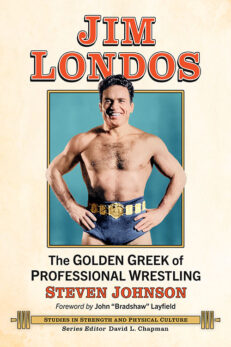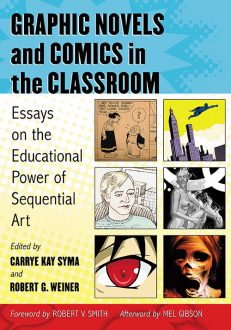Graphic Novels and Comics in the Classroom
Essays on the Educational Power of Sequential Art
$29.95
In stock
About the Book
Sequential art combines the visual and the narrative in a way that readers have to interpret the images with the writing. Comics make a good fit with education because students are using a format that provides active engagement. This collection of essays is a wide-ranging look at current practices using comics and graphic novels in educational settings, from elementary schools through college. The contributors cover history, gender, the use of specific graphic novels, practical application and educational theory. Instructors considering this book for use in a course may request an examination copy here.
About the Author(s)
Bibliographic Details
Edited by Carrye Kay Syma and Robert G. Weiner
Foreword by Robert V. Smith
Afterword by Mel Gibson
Format: softcover (7 x 10)
Pages: 296
Bibliographic Info: 49 photos, notes, bibliographies, index
Copyright Date: 2013
pISBN: 978-0-7864-5913-1
eISBN: 978-1-4766-0197-7
Imprint: McFarland
Table of Contents
Acknowledgments v
Foreword (Robert V. Smith) xi
Introduction (Robert G. Weiner and Carrye Kay Syma) 1
Part I: Significance of Graphic Novels and Comics: Then and Now
Using Comics to Teach the Language Arts in the 1940s and 1950s (Carol L. Tilley) 12
Stigmatization, Multimodality and Metaphor: Comics in the Adult English as a Second Language Classroom (Alice Leber-Cook and Roy T. Cook) 23
The Attitudes of Some Students on the Use of Comics in Higher Education (Christina L. Blanch and Thalia M. Mulvihill) 35
Part II: Teaching Graphic Novels and Comics in the Classroom
“I can get college credit for reading Batman? That’s a joke, right?” Confessions of a Fanboy Professor Teaching Comic Books (David Whitt) 50
“What the—?” Pre-Service Teachers Meet and Grapple Over Graphic Novels in the Classroom (James Bucky Carter) 58
Teaching Intertexuality and Parody Through the Graphic “Supertext”: Martin Rowson’s The Waste Land (1990) (Kevin M. Flanagan) 73
Part III: Graphic Novels and Comics, Beyond the Text
“Remember, remember the fifth of November”: Using Graphic Novels to Teach Dystopian Literature (Daniel Ian Rubin) 84
Exploring the Art in Sequential Art: An Art Historical Approach to
Teaching Comics (Abram Fox) 91
On Teaching Comics and Graphic Novels in the Medieval and Renaissance Classroom (Christina C. Angel) 101
Leagues, Evildoers and Tales of Survival: Graphic Novels and the World History Classroom (Maryanne A. Rhett) 111
“Indisciplinary” Teaching: Comics Studies and Research Writing Pedagogy (Phillip Troutman) 120
Part IV: Specific Graphic Novels and Comics and Their Application in Educational Settings
Teaching “The Auto-Graphic Novel”: Autobiographical Comics and the Ethics of Readership (Rebecca Scherr) 134
Teaching Theory Through Y: The Last Man (Timothy D. Arner) 145
Approaching Literacy Features Through the Graphic Novel Logicomix (Marianna Missiou and Yiannis Koukoulas) 154
Manga, the Atomic Bomb and the Challenges of Teaching Historical Atrocity: Keiji Nakazawa’s Barefoot Gen (Jeremy R. Ricketts)174
Information Comics: Risks and Pitfalls (Felix Keller and Dorothea Oechslin) 184
Graphic N-extbooks: A Journey Beyond Traditional Textbooks (Jeremy Short, David Ketchen and Jeff Shelstad) 200
Part V: Cultural Implications of Graphic Novels and Comics
Beyond Borders: Teaching Global Awareness Through the Graphic Novel (Lan Dong) 220
The Benefits of Writing Comics (Diana Maliszewski) 233
Multicultural Education Through Graphic Novels (Rebecca M. Marrall) 245
“So, Joss, why do you always write these strong women characters?” Using Joss Whedon’s Astonishing X-Men to Teach Feminism (Erin Hollis) 251
Sequential Art for Qualitative Research (Marcus B. Weaver-Hightower) 260
Afterword (Mel Gibson) 274
About the Contributors 277
Index 281
Book Reviews & Awards
- “Highly recommended”—Midwest Book Review
- “With the publication of Graphic Novels and Comics in the Classroom, editors Carrye Kay Syma and Robert G. Weiner have given us a tangible artifact to testify to the pervasive applicability of comics in educational settings. Their contributors are serious scholars with serious ideas about teaching comic books. This is no laughing matter, but a credible means for bringing the impact of the comics form into the classrooms of the twenty-first century. The contributors represent a wide-range of intellectual disciplines where instruction in graphic storytelling form is finding a home in academia. The editors are to be praised for coordinating such a multi-disciplinary initiative, one that mirrors the emerging field of Comics Studies itself so well.”—Matthew J. Smith, co-author of The Power of Comics: History, Form & Culture.





